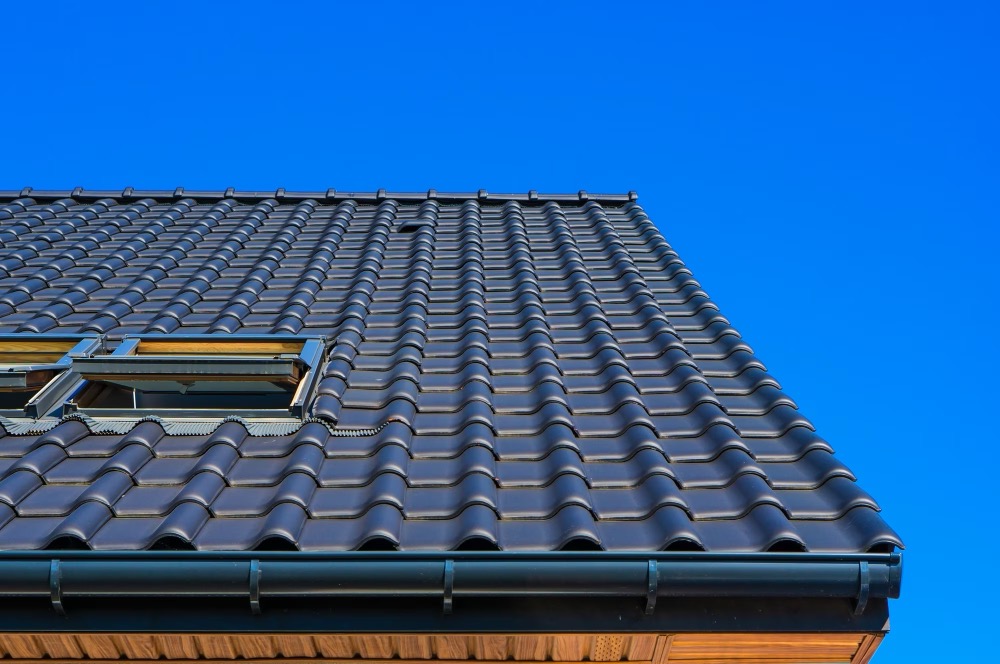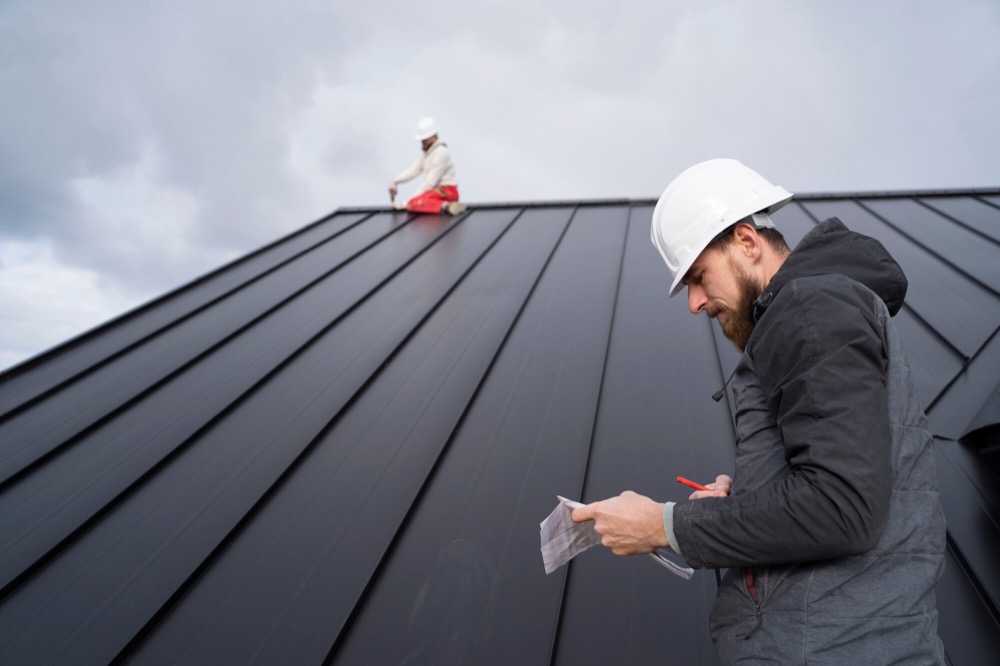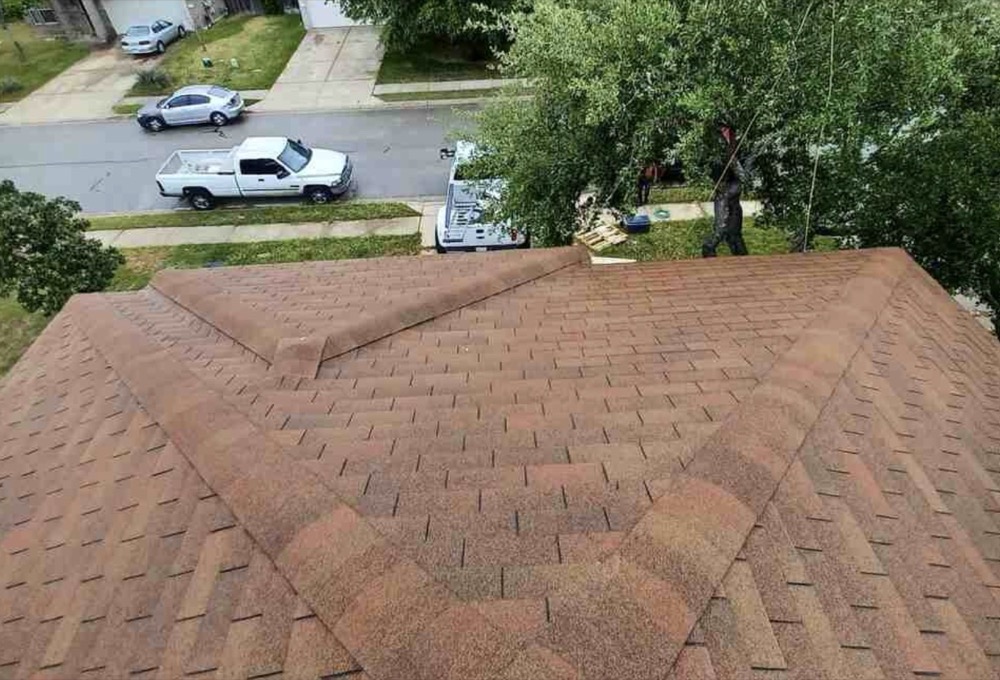2024 Forecast: Big Savings on Your New Roof
Intro
Are you a homeowner in need of a new roof? If so, you're in luck because 2024 is shaping up to be a great year for saving big on your roofing project. With advancements in technology, materials, and financing options, there are numerous ways to cut costs without sacrificing quality. In this blog post, we'll explore how you can take advantage of these opportunities to get the best deal on your new roof.
Understanding the Basics of Roofing in 2024
As we step into 2024, the roofing landscape is witnessing a transformation, driven by technological advancements and sustainability trends. The shift toward eco-friendly materials and energy-efficient designs is redefining homeowner expectations and industry standards. This evolution in roofing encompasses a variety of new materials, including advanced asphalt shingles engineered for longer life spans and metal roofing options that offer both durability and energy efficiency.
Innovative technologies are also making their mark on roofing practices. Drones, for instance, are increasingly used for thorough and safe roof inspections, eliminating the need for risky manual checks. Additionally, software tools for 3D modeling and simulation are enabling contractors and homeowners alike to visualize roof designs and select materials more effectively, ensuring a better match for both aesthetic preferences and functional requirements.
The regulatory environment is also adapting, with stricter codes and standards aimed at enhancing building resilience and environmental sustainability. Homeowners need to be aware of these regulations to ensure their roofing projects comply with local building codes, which can vary significantly from one jurisdiction to another.
Understanding these basics is crucial for anyone planning a roofing project in 2024. With the industry moving toward more sustainable and technologically advanced solutions, homeowners have the opportunity to invest in roofing systems that not only protect their homes but also contribute to energy savings and environmental conservation. As materials and methods evolve, staying informed about these trends will empower homeowners to make decisions that align with their values, preferences, and budgetary considerations, ensuring their roofing investments deliver value well into the future.
The Importance of Selecting the Right Roofing Contractor
When embarking on a roofing project, the decision of which contractor to hire is pivotal. This choice can significantly influence both the immediate outcome of the work and its longevity. With the myriad of options available, particularly in Austin, it’s imperative to conduct a diligent search to ensure you engage a contractor who not only aligns with your project’s requirements but also holds a reputation for reliability and quality craftsmanship.
In the quest for the ideal roofing contractor, a methodical approach is advisable. Start by soliciting recommendations from friends, family, or neighbors who have recently undergone roofing projects. Their firsthand experiences can offer invaluable insights into the professionalism and performance of local contractors. Furthermore, online platforms provide a wealth of reviews and testimonials. These resources can be instrumental in narrowing down your options to those contractors who consistently deliver excellence.
Once you've compiled a shortlist of potential candidates, the next step is to verify their credentials. This includes ensuring they are licensed to operate in your area, checking for any necessary insurance coverages, and investigating their standing with professional associations. Such due diligence is crucial for your peace of mind and the protection of your investment.
Engaging in comprehensive consultations with each contender allows you to gauge their expertise and commitment to customer satisfaction. These discussions should cover their approach to your project, the materials they recommend, and how they plan to adhere to your budget and timeline. Don’t hesitate to request quotes from several contractors to compare value for money. However, be wary of quotes that seem significantly lower than others, as they may indicate compromises in material quality or workmanship.
In summary, the selection of a roofing contractor is a process that demands careful consideration and research. By choosing wisely, you ensure that your roofing project in Austin is executed flawlessly, resulting in a durable and aesthetically pleasing roof that enhances your home’s value and protection.
Timing Your Roof Replacement for Maximum Savings
Optimizing the timing of your roof replacement can significantly impact your overall costs, providing an avenue for substantial savings. One strategic approach is to schedule your project during the roofing industry's slower seasons, typically late fall through early spring in many regions. During these periods, roofing contractors often have greater availability and may offer discounts or incentives to secure work. This contrasts sharply with the peak seasons of late spring to early fall, when demand is high, and prices tend to be less flexible.
Moreover, consider the weather's role in your roofing project. Undertaking a replacement during stable, mild weather conditions can mitigate the risk of delays caused by rain, snow, or extreme temperatures, which can prolong the project and increase labor costs. However, it's essential to balance this with the need to avoid the coldest months when installation conditions might not be ideal for certain materials, potentially affecting the roof's integrity.
Additionally, planning your roof replacement can coincide with the release of new roofing materials or technological advancements that offer improved durability, efficiency, or cost-effectiveness. Staying abreast of industry trends and product launches can help you to time your project to take advantage of these innovations.
By carefully considering these aspects—seasonal pricing variations, weather conditions, and market trends—you can make informed decisions that align your roof replacement with periods that promise not just reduced costs, but also convenience and the opportunity to access the latest roofing solutions. Engaging a reputable roofing contractor early in the planning process can provide you with insights and guidance on the best timing for your project, ensuring that you maximize your savings while achieving a high-quality roof replacement that meets your needs and expectations.
Leveraging Roofing Inspections to Your Advantage
Maximizing the benefits of roofing inspections is a strategic approach that can lead to significant long-term savings for homeowners. An often-overlooked aspect of roof maintenance, regular inspections serve as the first line of defense against potential issues that can escalate into costly repairs if left unaddressed. Engaging with professional roofing contractors to conduct these inspections can uncover minor damages or wear that, when promptly repaired, extend the lifespan of your roof and maintain its optimal performance.
Roofing inspections are particularly beneficial when conducted at critical times, such as following severe weather events or as part of a routine maintenance schedule. These inspections can identify issues such as missing shingles, damaged flashing, or compromised sealing, which are not always visible to the untrained eye. Early detection and repair of these issues not only prevent water infiltration, which can lead to interior damage and mold growth but also ensure that your roof continues to provide the necessary protection against the elements.
Another advantage of leveraging roofing inspections is the potential to enhance your roof’s energy efficiency. A thorough inspection can reveal opportunities for improvements, such as additional insulation or the installation of a reflective roof coating that can reduce heat absorption and lower cooling costs. These energy-efficient upgrades can contribute to significant savings on utility bills over time.
Furthermore, documentation of regular roofing inspections and maintenance can be invaluable in the event of an insurance claim. Providing evidence of diligent upkeep can facilitate the claims process and may influence the outcome in your favor.
To capitalize on the advantages of roofing inspections, homeowners should seek out reputable roofing contractors who offer comprehensive inspection services. These professionals can provide detailed reports, prioritize repairs, and recommend preventive measures that contribute to the longevity and performance of your roof. Investing in regular roofing inspections is a proactive step that pays dividends in preserving the value and integrity of your home.
The Role of Insurance in Managing Roofing Costs
Insurance plays a pivotal role in mitigating the financial impact of roofing projects, especially when unexpected damages occur. Homeowners are often faced with the challenge of repairing or replacing a roof due to events beyond their control, such as severe weather conditions or accidental fires. In such scenarios, having the right insurance coverage can significantly lessen the financial burden. It is essential for homeowners to thoroughly review their current homeowner's insurance policy and engage in conversations with their insurance provider to fully understand what is covered under their plan.
Many policies cover roof damage caused by unpreventable reasons, including natural disasters or vandalism. However, the extent of coverage can vary greatly, depending on the specifics of your policy. Some insurance plans may cover the total cost of repairs or replacement, while others may only cover a portion, taking into account the age of the roof or its condition before the damage occurred. Additionally, certain types of roofing materials may be more favorable in the eyes of insurance companies, potentially affecting premiums and coverage limits.
Proactively discussing your roofing project with your insurance agent before beginning can also uncover potential savings or the need for adjustments to your policy to ensure optimal coverage. This step is particularly important for homeowners considering upgrades to more durable or environmentally friendly roofing options, which might not only qualify for insurance discounts but could also improve the home's overall value and resilience against future damage.
Engaging with your insurance provider early on can reveal opportunities to adjust your policy for better coverage, inform you about the documentation needed for claims, and help you understand the claims process, which can be intricate and time-sensitive. Being well-informed and prepared can streamline the experience, ensuring that if the need arises, the insurance aspect of your roofing project is managed efficiently, allowing you to focus on the restoration of your home with confidence and financial peace of mind.
Innovative Roofing Materials That Save Money
Exploring the realm of innovative roofing materials unveils opportunities for homeowners to significantly cut down on long-term expenses while contributing to environmental sustainability. The adoption of cutting-edge options like metal roofs, cool roofs, and solar shingles is reshaping the concept of roofing from a mere necessity to an investment that pays dividends in both utility savings and environmental impact. Metal roofing, revered for its longevity and resilience, stands out as a sustainable choice capable of reflecting sunlight, thereby reducing cooling costs during hot seasons. Cool roofs elevate this concept further, utilizing highly reflective materials to minimize heat absorption and lower indoor temperatures naturally.
Solar shingles represent the forefront of roofing technology, blending the protective qualities of traditional shingles with the renewable energy generation of solar panels. This integration not only safeguards the home from the elements but also harnesses solar power to offset electricity costs, making it an increasingly popular choice among eco-conscious homeowners. The initial installation of these advanced materials may present a higher upfront cost, but the return on investment over time through reduced utility bills and potential tax incentives makes them a financially sound choice.
The evolution of roofing materials towards more sustainable and energy-efficient solutions is in response to a growing awareness of the need for environmental conservation and energy savings. By consulting with a knowledgeable roofing contractor, homeowners can navigate the array of available materials to find those that align with their specific needs and values. Incorporating these innovative roofing materials into a project not only contributes to a home’s aesthetic appeal and protection against the elements but also embodies a commitment to sustainable living practices that benefit both the homeowner and the broader community.
The Value of Energy-Efficient Roofing Options
In the pursuit of optimizing home energy usage and achieving significant cost reductions, energy-efficient roofing stands as a pivotal element. These roofing options are engineered to either reflect more sunlight, thereby reducing the amount of heat absorbed by the building, or enhance insulation to maintain indoor temperatures with minimal energy expenditure. Among the various innovative solutions, reflective roofing materials and specialized insulative coatings are notable for their ability to alter the thermal dynamics of a home.
Reflective roofs, often characterized by their light coloring and high solar reflectance, divert a substantial portion of solar radiation away from the structure. This attribute is particularly beneficial in warmer climates, where it can lead to a noticeable decrease in the need for air conditioning, thus lowering electricity bills. On the other hand, roofs designed with advanced insulation techniques trap heat during colder months and block heat entry during warmer periods, promoting a stable indoor environment that requires less energy for heating and cooling.
The integration of these energy-efficient options into roofing projects demands an initial investment that is typically higher than that of standard roofing materials. However, the return on this investment is realized through markedly reduced utility costs over the lifespan of the roof. Homeowners contemplating these options should engage with experienced roofing contractors who can provide detailed insights into the potential energy savings and help calculate the break-even point for such an investment.
Furthermore, it's worth noting that various local governments and utility companies offer incentives or rebates for the installation of energy-efficient roofing, recognizing its benefits in terms of energy conservation and sustainability. These incentives can significantly offset the initial costs and accelerate the financial payback period.
Incorporating energy-efficient roofing solutions not only supports financial savings but also aligns with environmentally responsible practices by reducing the home's carbon footprint. As such, these options represent a smart choice for homeowners looking to enhance their property's energy performance and contribute to broader environmental efforts.
Financing Options for Your Roofing Project
Navigating the financial aspects of a roofing project can seem overwhelming, but understanding the variety of financing options available can significantly ease the process. One commonly utilized method is obtaining a home improvement loan from a bank or credit union. These loans are typically unsecured and based on your credit score and financial history, offering a straightforward way to finance your project without tapping into home equity.
Another option is leveraging a home equity line of credit (HELOC) or home equity loan. These options are secured by your home's equity and often come with lower interest rates than personal loans, making them an attractive choice for larger projects. The difference between the two lies in the disbursement and repayment: HELOCs provide a revolving line of credit you can draw on as needed, while home equity loans offer a lump sum upfront.
For homeowners seeking alternative solutions, many roofing contractors offer financing plans, sometimes with promotional terms like zero interest if paid within a certain period. These plans can provide convenient, immediate financing without the need for a third-party lender, though it's crucial to read the fine print to understand any fees or penalties that may apply if the balance isn't paid within the promotional period.
Additionally, it's worth exploring local and federal government programs that offer loans or rebates for energy-efficient roofing upgrades. These programs not only help finance your project but also promote long-term savings through reduced energy bills.
Regardless of the route you choose, it's essential to compare terms, interest rates, and repayment plans to find the financing option that best suits your budget and timeline for your roofing project.
DIY Roofing: Pros, Cons, and Considerations
Embarking on a DIY roofing project might seem like an appealing option for homeowners looking to cut costs. The prospect of saving on labor expenses and having direct control over the timeline and execution of the project can be enticing. However, roofing is a complex and labor-intensive task that requires specialized knowledge, skills, and equipment.
One of the primary advantages of DIY roofing is the potential for cost savings, at least upfront. For those with a background in construction or who possess considerable home improvement experience, taking on a roofing project might result in a sense of accomplishment and personal satisfaction. Additionally, managing the project on your own schedule allows for flexibility that is not always possible when working with professional contractors.
On the downside, the risks and challenges associated with DIY roofing are significant. Roofing involves working at heights, which poses a considerable safety risk without the proper safety gear and experience. Mistakes made during a DIY roofing project can lead to leaks, structural damage, or the need for costly repairs, potentially negating any initial savings. Moreover, the lack of professional expertise may result in overlooking critical aspects of roofing, such as ventilation and insulation, leading to issues with efficiency and durability.
Another critical consideration is the warranty. Many roofing materials come with warranties that are only valid if installed by certified professionals. Opting to install these materials yourself could void these warranties, leaving you without recourse in the event of material failure.
Ultimately, while the allure of potential savings and hands-on involvement is understandable, the complexities and risks associated with DIY roofing make it essential for homeowners to carefully consider whether they possess the necessary skills, tools, and understanding of roofing systems to ensure a successful and safe project.
Navigating Warranties for Long-Term Savings
Navigating the intricate landscape of roofing warranties is a strategic step in safeguarding your investment and ensuring sustained savings on repairs or replacements. Roofing warranties come in two primary types: manufacturer warranties, which cover the roofing materials against defects, and workmanship warranties, provided by contractors to guarantee the quality of their installation. The strength and duration of these warranties can significantly influence the long-term value and protection of your roofing project.
When evaluating manufacturer warranties, it’s important to pay close attention to what is actually covered. Some warranties may only address defects in the materials themselves, leaving potential costs arising from improper installation uncovered. Others might offer comprehensive coverage, including the cost of replacement materials and the labor to install them, but with stringent conditions or exclusions.
Workmanship warranties, on the other hand, cover the quality of the installation job. These warranties vary greatly in length and terms, depending on the contractor. A robust workmanship warranty can provide peace of mind, knowing that any issues related to how the roof was installed will be addressed without additional costs.
Selecting the right combination of warranties requires a careful examination of what each warranty covers, its duration, and any limitations or requirements for maintenance. Homeowners should also consider the reputation and longevity of both the roofing manufacturer and the contractor, as a warranty's value is closely tied to the issuer's ability to honor it over time. By thoroughly understanding and strategically choosing warranties, homeowners can protect their roofing investment, minimize future expenses, and enjoy long-term savings and satisfaction.
‹ Back









